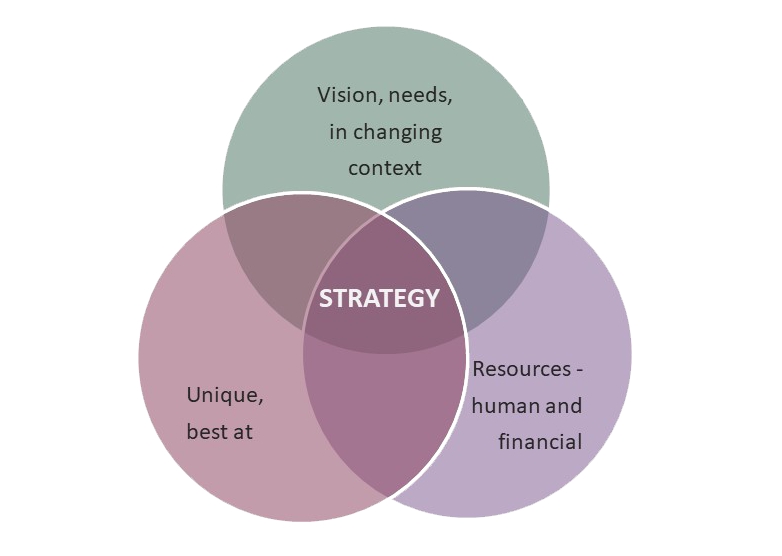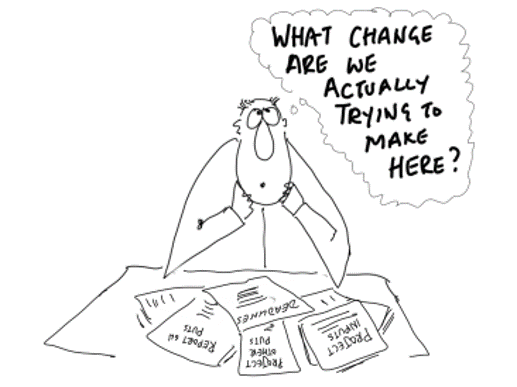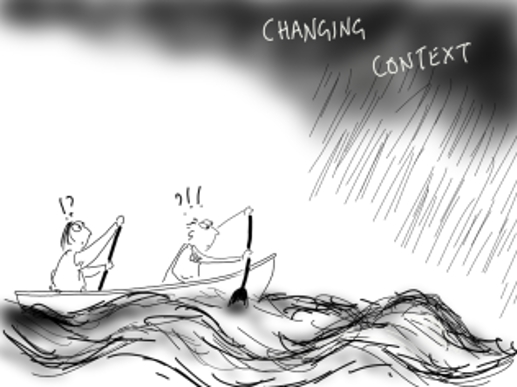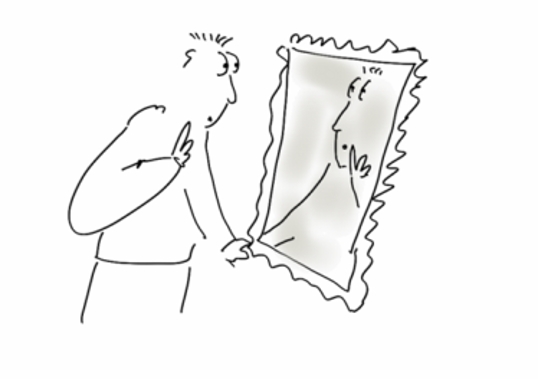Section 03: Core components of a strategic plan
INTRAC’s experience highlights the importance of six core elements (though what activities they involve obviously depends on the size and location of the NGO):
Finding the strategy sweet spot
Predicting the changing context
Focusing on what brings change
Knowing who you are
Taking stock of resources
Making hard choices
3.1: Finding the strategy sweet spot
Of the many, many frameworks for strategy, the three questions posed by Jim Collins (Good to Great 2001) are very helpful in defining strategic focus:
What is the vision, what are the needs in the changing environment? What are we most deeply passionate about?
What are the unique strengths of our organisation? What can we do best compared to others? What is our ‘calling’?
What drives our resources engine (human and financial)? How are they changing?
The vision should be about the people who the organisation serves. It should be about developing positive potential. The resource question should not be simply financial. It is also about what people have energy for.
The strategy sweet spot is where the answers to these questions overlap. The tighter the questions can be answered, the more focused the strategy. It takes relentless discipline to say ‘no’ to opportunities that take you away from the middle of three circles.
Another useful model for NGO strategy is the Sigmoid curve. This 4 minute video describes the sigmoid curve in a business context.
3.2 Predicting the changing context
Thinking through the implications of future changes in the environment is an essential element of strategic planning. It involves considering threats as well as identifying potential new opportunities. Tools like the PESTLE framework can help analyse how the environment is likely to change (see Section 5.2).
In the current turbulent context, scenario planning may be a useful approach as it identifies a range of different ‘realities’ of what might happen in the future. NGOs can then use these scenarios to discuss the possible impacts and the ways the NGO can proactively respond.
3.3 Focusing on what brings change
A good strategy process starts from knowing what brings change to beneficiaries or to policy environment. The project system in which NGOs operate encourages a focus on activities and deadlines, rather than on what actually brings change. In developing strategy, it is helpful to consider what brings change and why. Many NGOs are finding it useful to explore their ‘theory of change’. This helps prioritise actions that make a meaningful difference to the people the NGO exists to serve.
3.4 Knowing who you are
A good strategic planning process connects to the identity and mission of the organisation. It obviously helps to be clear about questions like:
Why do you exist?
What is the unique contribution you bring to the world? What would be lost if you did not exist?
Who are you?
Answers might have been clear at the start, but over time this can become fuzzy or obscured. Programmes may not have gone as planned. Different people may be on board… A good strategy process often involves ‘cleaning the mirror’, so we are clearer about who we are.
“A good strategic plan is both aspirational and realistic.”
3.5 Taking stock of resources - honestly
To plan well, it helps to know where you are starting from. An honest and open discussion about existing strengths and weaknesses (see also section 5.3) is an important element of strategy. Brutal facts may need confronting. Self-delusion does not help anyone. A good strategic plan is both aspirational and also realistic. It takes a hard look at how it will resource the plans, makes considered financial projections. A strategy should be read together with a financial plan. To be viable, a strategy has to be resourced with both money and skilled people.
3.6 Making hard choices
A good strategic plan makes clear, prioritised choices about where the NGO will focus its energies. It is not a shopping list of good things to do, but it identifies which are the best ones for the next few years. It points out what, if anything, will be different from the previous period? What has changed and why? What it will do more of, less of and better?
Remember: a strategic plan is not a shopping list of activities. See also 1.3 above.
Last updated






